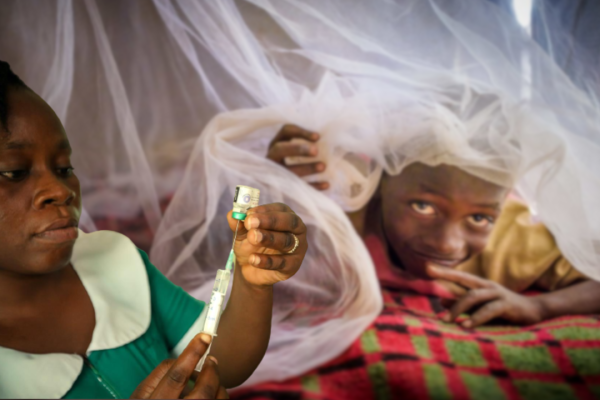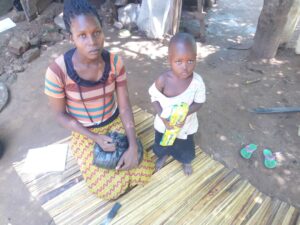INTRODUCTION
April 25, marks World Malaria Day. A disease now eradicated in the West, it is unfortunately still a cause of death in some countries, including Africa. The condition is the leading cause of infant mortality and infirmity in as many as 91 tropical countries. Those most affected are often children under the age of 5, who are particularly susceptible to the infection and tend to develop severe forms of it. In this article, I will elaborate on the initiatives planned on World Malaria Day 2023 and some interesting facts about the disease. It is an awareness day established by the World Health Organization (OMS) to raise awareness about the dangers of malaria and encourage global efforts to combat it. It is celebrated annually on April 25 after being established by World Health Organization member states during the 2007 Assembly. The main goal is to provide information and knowledge about the importance of prevention, diagnosis, and timely treatment of the disease, as well as the importance of research and development of new tools to combat it. To succeed in curbing the problem, it is undoubtedly crucial to be able to control Anopheles mosquitoes, namely those that transmit malaria parasites to humans. These are exactly two species of mosquitoes, Anopheles gambiae and Anopheles coluzzii, which are responsible for transmitting the disease in Africa. Experts and scientists are trying to optimize control strategies based on the use of insecticides and are also trying to develop new strategies, based on genetic engineering. But, equally important is to find effective methods to limit a very worrying and increasingly rampant phenomenon, insecticide resistance by mosquitoes.
HISTORY OF MALARIA
In 2000, the United Nations launched the Millennium Development Goals. One goal was to reduce malaria’s burden by 75 percent by 2015. This catalyzed significant investment, particularly in sub-Saharan Africa. Between 2000 and 2015, international donor funding, primarily from the Global Fund to Fight AIDS, Tuberculosis and Malaria and the U.S. government-led Presidential Malaria Initiative, enabled African malaria control programs to replace failed interventions with more effective ones. By 2015, more than 150 million insecticide-treated mosquito nets, 179 million rapid diagnostic tests for malaria, and 153 million doses of OMS-recommended malaria treatment-artemisinin-based combination therapies (ACTs)-had been distributed across Africa. Encouraged by progress in reducing malaria, OMS launched the Global Malaria Technical Strategy. This strategy provided malaria-endemic countries with a roadmap for reducing malaria transmission. The ultimate goal was to have a malaria-free world by 2030. Unfortunately, the release of this strategy coincided with a leveling off of national and international funding, which led to an increase in malaria cases. 2016 there were 216 million cases, five million more than in 2015. Ninety percent of the new cases were in Africa, where funding had fallen to less than 42 percent of what the continent required for effective malaria control.
DATA
Since the beginning of the 21st century, OMS has published global estimates of the number of people dying from malaria. Between 2000 and 2015, the global death toll dropped by nearly 40 percent: from 896,000 deaths in 2000 to 562,000 in 2015. Since then, progress has slowed. The number of deaths increased in 2020 due to disruptions from the Coronavirus pandemic.2 Africa is the region most affected by malaria: in 2019, 96 percent of global malaria deaths occurred in Africa. But Africa is also the world region with the most significant progress: since 2000, deaths have declined significantly. The Institute of Health Metrics and Evaluation (IHME) has provided estimates of malaria deaths since 1990. Over this period, we see a clear upward-peak-downward trend, rising from about 850,000 deaths in 1990; peaking at about 965,000 in 2004; and then declining (albeit at varying rates) to about 650,000 in 2019. These estimates are considerably higher than those of OMS. Although they diverge on the total number of malaria deaths, both the IHME and OMS estimate that more than 90 percent (9 out of 10 deaths) come from the African region. Globally, the age group most vulnerable to malaria deaths are children under the age of five – they accounted for 55 percent of total deaths in 2019.
NIGERIA
Nigeria’s environment is favorable in which mosquitoes-the vector of malaria-can thrive. In terms of environmental management, Nigeria leaves much to be desired. The country has open waste sites, blocked drainage systems, and because people have no drinking water, they store water at home in containers. All of these provide ideal sites for mosquitoes to breed. In terms of humidity, Nigeria has vegetation that favors the reproductive stages of the parasite in the mosquito. Altitude also plays a role. And, in most of Nigeria, the altitude allows the mosquito to fly without too much difficulty. Only the Mambilla Plateau is considered relatively malaria-free in Nigeria. It has an altitude above 5,000 feet that makes it difficult for mosquitoes to inhabit. In addition to this, Nigeria has a large population that makes malaria transmission much easier. New cases of malaria can only be curbed with environmental measures, including the use of insecticidal nets and personal protection. Vaccines certainly offer additional prevention. But Nigeria needs to step up its game. The current National Malaria Strategic Plan 2021-2025 is based on a well-researched model. It is no longer business as usual. The plan clearly shows that if we don’t do more, malaria will continue to increase. But Nigeria has gone further to be almost a global example on how to implement preventive chemotherapy. 21 out of 36 states have reached more than 25 million children under five in each cycle of intervention. Four cycles per year have been organized and this has helped reduce mortality.
WORLD HEALTH ORGANIZATION
Combating malaria vectors will require multisectoral actions and the involvement of decentralized administrative units and communities to support behavioral change. A new global framework for responding to malaria in urban areas, jointly developed by OMS and UN-Habitat, guides city leaders and stakeholders. Meanwhile, a robust research and development team is set to bring a new generation of malaria control tools that could help accelerate progress toward global goals. Finally, on implementation. We will prioritize this segment as part of the 2023 campaign and the critical importance of reaching marginalized populations with available tools and strategies to reduce transmission for present and future gains. Malaria programs should be decentralized to district and community levels where health systems are closest to affected populations. We need to enable health workers and frontline communities to participate fully in identifying key barriers in accessing services, ensure effective implementation of malaria control strategies, and hold their leaders accountable for health outcomes. This day provides us with an opportunity to renew policy commitments and strengthen investments in malaria prevention and control.
WHAT TO DO
More powerful interventions are urgently needed. Investment in accelerated development and vaccine introduction should be prioritized. A possible malaria vaccine that is currently being tested in Africa, RTSS, has shown a modest efficacy of 39%. It has also shown promising results with a prediction that in fully immunized children it can prevent 484 deaths per 100,000. More funding needs to be made available as it has a direct impact on countries’ ability to control malaria. For example, in Zanzibar, malaria rates rose and fell with funding levels between 1960 and 2013. Between 1981 and 1983, Sao Tome reported no malaria cases because of constant internal residual spraying of households with DDT twice a year and weekly administration of drugs to prevent the disease. When funding dried up, a major epidemic occurred in 1985, and by 1997 malaria prevalence had risen to 53 percent. Sao Tome has recovered to the point that it is now in the pre-elimination phase. With current low transmission rates, the end of malaria may be in sight with the annual incidence dropping from 33.8 per 1,000 people in 2009 to 9.7 per 1,000 in 2014. In Kenya, transmission in the highlands of western Kenya was reduced between 2007 and 2008. This was attributed to widespread indoor residual spraying and the introduction of artemisinin-based combination drugs with support from the Global Fund.







